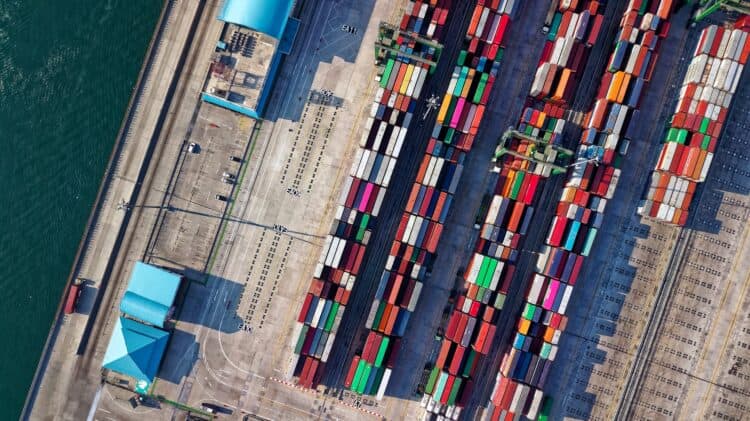IDC predicts that by 2026, 60% of A2000 companies will use generative artificial intelligence (GenAI) tools to support core supply chain processes as well as dynamic supply chain design and will leverage AI to reduce operating costs by 5%.
This AI revolution holds significant implications for manufacturers, retailers, and other supply chain participants, promising a more synchronized, responsive, and cost-effective supply chain across the region.
The IDC Future Enterprise Resiliency & Spending Survey 2023 revealed that most supply chain organizations in the Asia/Pacific region (80%) expect the economy in 2024 to either remain stagnant or shrink compared to 2023.
To stay competitive and keep growing, these companies are focusing on productivity and efficiency. Over the next 5 years, investments in AI will need to focus on creating substantial efficiency gains and cost reductions to counteract the potential economic stagnation.
Supply chain organizations are, therefore, poised to accelerate their digital transformation initiatives, with a heavy emphasis on AI-driven technologies that can streamline and optimize operations, enhance decision-making, and foster more proactive and predictive supply chain strategies.
Enterprises throughout the Asia/Pacific region are starting to acknowledge the importance of utilizing AI to enhance their supply chain processes. This shift is crucial because AI can help companies extract valuable insights from data, enabling predictive analytics and intelligent automation, leading to improved demand forecasting, resource allocation, and customer satisfaction in an increasingly volatile market.
How AI will impact supply chains in Asia/Pacific Excluding Japan (APEJ)
Logistics visibility and performance optimization: By 2027, 40% of APEJ logistics teams will deploy advanced visibility, using AI/ML analytics for insights that optimize performance and achieve 3% savings in logistics spending.
Parts planning productivity: By 2026, 40% of the A2000 will look to autonomous service parts planning to ensure mean time to repair can be improved, ensuring customer or operator assets are productive.
Last-mile profitability improvements: By 2028, increased planning and execution integration, nearshoring, improved inventory allocation, AI-based e-commerce, and fulfilment optimization will improve last-mile profitability by 5%.
The transformative power of AI in Asia/Pacific supply chains is reshaping workforce dynamics and amplifying cybersecurity needs, while also promising enhanced forecasting and strategic decision-making. Enhanced visibility and optimized performance in logistics are just the beginning. New performance standards will be set using predictive shipping and algorithmic supply chains, increasing productivity and improving inventory availability and customer service.
It's worth noting that while AI is an essential component of future supply chain technology, a comprehensive approach to technology is required to realize the advantages of a digital business fully. Other significant predictions for the future of supply chain technology include:
Robotics automation surge: By 2025, 50% of APEJ companies will implement broad robotics automation to improve order fulfilment speed and accuracy, resulting in an increased pick speed of 10% and reduced pick errors by 2% to 3%.
Ecosystem operations digitalization: By 2025, 60% of A2000 organizations will have a digital commerce platform in place for ecosystem operations, driving a 10% higher data capitalization rate and improving customer retention by 10%.
Operational role augmentation: By 2027, 60% of Asia/Pacific-based organizations will augment operational roles with automation technology, elevating employee engagement and unlocking a 50% increase in worker efficiency.
Embracing the circular economy: By 2028, 50% of Asia/Pacific-based manufacturers will operationalize circular economy principles to improve the availability of strategic/direct materials and improve supply reliability by 15%.
Relocation of Final Assembly: By the end of 2026, 30% of A2000 companies will have relocated final assembly capabilities closer to demand, resulting in a 10% reduction in overall logistics costs.
Increasing Supply Chain Orchestration: By 2028, 35% of A2000 companies will be using supply chain orchestration tools that integrate key suppliers/customers, including digital twin capabilities, improving supply chain responsiveness by 15%.
"The integration of AI within supply chains signifies a crucial evolution, anticipating an accelerated adoption of advanced technology. This shift is poised to bring substantial improvements, ranging from heightened productivity to more engaged workforces. The immediate focus is on use cases that enhance short-term productivity and efficiency, with a long-term vision encompassing broader ecosystem integration and an increased emphasis on sustainability," says Rani Ratna, senior research manager at IDC Asia/Pacific.



